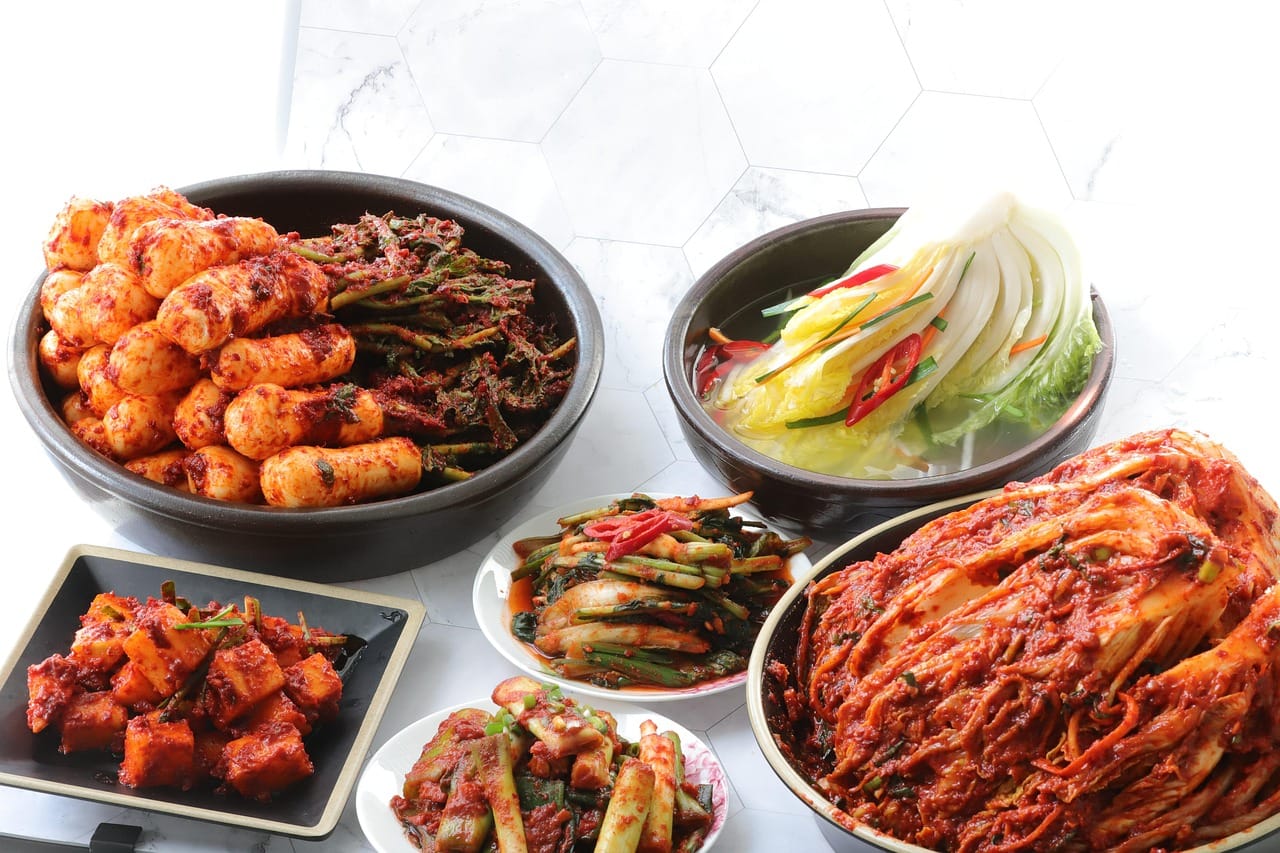korean food
Types of Korean Kimchi
Korean kimchi boasts a wide variety of types depending on the region and ingredients. It can be broadly categorized into baechu kimchi (cabbage kimchi), radish kimchi, and other kimchi varieties, each with numerous variations.

Introduction to Korean Food Culture
Korean cuisine, or Hansik, is a vibrant and diverse culinary tradition that has been shaped by centuries of history, culture, and geography. It’s a harmonious blend of flavors, colors, and textures, reflecting the Korean people’s deep respect for nature and their emphasis on balance and well-being.
Key Characteristics:
- Balance and Harmony:
- Korean meals are typically served with a variety of side dishes (banchan) that complement the main dish, creating a balanced and harmonious dining experience.
- The concept of “Um and Yang” (yin and yang) is also reflected in the cuisine, with a focus on balancing hot and cold, spicy and mild flavors.
- Fermentation:
- Fermented foods like kimchi (fermented cabbage) and doenjang (fermented soybean paste) are staples of Korean cuisine, known for their rich flavors and health benefits.
- These fermentation techniques have been passed down through generations, contributing to the unique character of Korean food.
- Seasonal Ingredients:
- Korean cuisine emphasizes the use of fresh, seasonal ingredients, reflecting the country’s diverse agricultural landscape.
- Each season brings its own unique ingredients and flavors, resulting in a constantly evolving culinary experience.
- Communal Dining:
- Korean meals are often shared among family and friends, fostering a sense of community and connection.
- Dishes are typically placed in the center of the table, allowing everyone to enjoy a variety of flavors and textures.
Popular Dishes:
- Kimchi:
- A staple of Korean cuisine, kimchi is a fermented vegetable dish that comes in countless varieties.
- Bibimbap:
- A colorful and flavorful rice dish topped with vegetables, meat, and a fried egg.
- Bulgogi:
- Thinly sliced marinated beef, grilled or stir-fried to perfection.
- Galbi:
- Marinated beef short ribs, grilled over charcoal for a smoky flavor.
- Tteokbokki:
- Spicy rice cakes, a popular street food and comfort food.
- Korean BBQ:
- A very popular way to dine, where meat is grilled at the table.
Cultural Significance:
- Korean food is deeply intertwined with the country’s cultural identity and traditions.
- It plays a central role in celebrations, holidays, and everyday life.
- It is becoming increasingly popular world wide.
Korean food is a culinary adventure that offers a glimpse into the heart and soul of Korea. Enjoy!